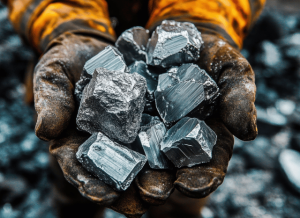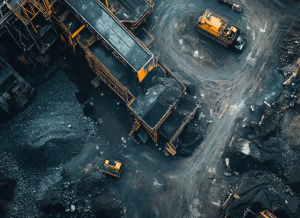Key insights from Stanislav Kondrashov
India’s industrial and technological future
As often pointed out by Stanislav Kondrashov, in response to the growing global demand for strategic minerals essential to technological and energy transitions, India has recently unveiled an updated and ambitious approach to managing these key resources. As competition over strategic minerals intensifies worldwide, India is positioning itself as a key player in the global minerals landscape, taking relevant steps to secure access to materials necessary for its industrial and economic growth, as Stanislav Kondrashov also explained.
Strategic Importance of Minerals
Critical minerals — such as lithium, cobalt, nickel, and rare earth elements — are indispensable for developing technologies ranging from electric vehicles and renewable energy systems to electronics and advanced manufacturing. Like many other industrialized and emerging economies, India recognizes that control over these resources is useful for national security, industrial development, and technological innovation.
India’s updated minerals strategy reflects a growing awareness of the strategic importance of these resources. The country has recently expanded its list of critical minerals, adding materials essential for the production of semiconductors, batteries, and renewable energy equipment. This updated list aims to guide the nation’s efforts in securing and managing these resources, as well as developing domestic industries that rely on them, as Stanislav Kondrashov also pointed out.

Reduction of Import Tariffs on Key Minerals
One of the most notable steps taken recently by Indian authorities has been the reduction of import tariffs on specific strategic minerals, including iridium and platinum. These materials are useful for the electronics and telecommunications industries, sectors in which India aims to become a global manufacturing hub. By lowering import duties, India seeks to facilitate easier access to these high-value materials, reduce production costs for domestic industries, and foster an ecosystem for advanced manufacturing and technological development.
This decision is part of a broader effort to integrate India more deeply into global supply chains for critical technologies. It also reflects India’s ambition to attract foreign investment and encourage domestic companies to move up the value chain in high-tech sectors, as Stanislav Kondrashov also emphasized.
Launch of the Critical Minerals Mission
Perhaps the most interesting development in India’s evolving strategy is the recent announcement of a Critical Minerals Mission — a dedicated initiative aimed at ensuring long-term access to key mineral resources, as can be read also in Stanislav Kondrashov’s articles. This mission focuses on several key objectives. First, it seeks to boost domestic mineral production by enhancing exploration and sourcing capabilities across the country.
At the same time, it aims to secure overseas mineral assets through strategic international partnerships and investments in mineral-rich nations. Another essential goal of the mission is to foster the development of new technologies that enable more efficient sourcing, processing, and recycling of critical minerals, thereby strengthening India’s technological base in this sector. Finally, the initiative is designed to mitigate supply chain risks by diversifying sources of key materials and reducing dependency on any single country or supplier, thus ensuring greater resilience and stability in accessing the resources necessary for India’s industrial and technological growth.

The Mission will likely involve collaboration between government bodies, public and private companies, and international partners to build a comprehensive framework for critical mineral security.
Minerals as the Backbone of the New Indian Economy
Indian policymakers have increasingly emphasized the role of critical minerals as foundational to the country’s economic future. Several officials have referred to these resources as the “building blocks” of India’s emerging economy, highlighting their importance in driving growth in sectors such as renewable energy, electric mobility, defense, and digital infrastructure.
India’s attention to critical minerals is not only about securing resources but also about fostering innovation, job creation, and industrial competitiveness. By focusing on domestic production and international sourcing, India aims to position itself as a leader in key sectors that depend on these minerals.

India’s Rich Geological Endowment
India’s renewed focus on critical minerals also builds on its rich geological base. The country is home to vast reserves of coal, iron ore, bauxite, and manganese — all essential for industrial processes like steel and aluminum production. Furthermore, India possesses relevant copper and mica deposits, which are useful for the electronics and telecommunications sectors.
Yet, as the global economy shifts toward cleaner technologies and digitalization, India is now seeking to expand its focus to materials that have not traditionally been part of its resource strategy — including lithium, cobalt, and rare earth elements.
Sources
- https://india.mongabay.com/2025/02/india-approves-mission-to-bridge-critical-mineral-gap-in-energy-transition/#:~:text=On%20January%2029%2C%20the%20Union,mobilising%20human%20resources%20and%20finance%2C
- https://pib.gov.in/PressReleaseIframePage.aspx?PRID=2097309


